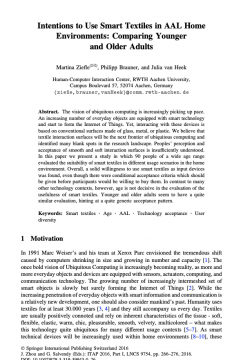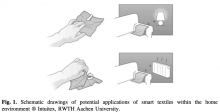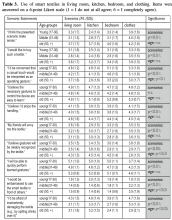
Abstract
The vision of ubiquitous computing is increasingly picking up pace. An increasing number of everyday objects are equipped with smart technology and start to form the Internet of Things. Yet, interacting with these devices is based on conventional surfaces made of glass, metal, or plastic. We believe that textile interaction surfaces will be the next frontier of ubiquitous computing and identified many blank spots in the research landscape. Peoples’ perception and acceptance of smooth and soft interaction surfaces is insufficiently understood. In this paper we present a study in which 90 people of a wide age range evaluated the suitability of smart textiles in different usage scenarios in the home environment. Overall, a solid willingness to use smart textiles as input devices was found, even though there were conditional acceptance criteria which should be given before participants would be willing to buy them. In contrast to many other technology contexts, however, age is not decisive in the evaluation of the usefulness of smart textiles. Younger and older adults seem to have a quite similar evaluation, hinting at a quite generic acceptance pattern.
Ziefle, M., Brauner, P., van Heek, J.: Intentions to Use Smart Textiles in AAL Home Environments: Comparing Younger and Older Adults. In: Salvendy, G. and Zhou, J. (eds.) Human Aspects of IT for the Aged Population - Design for Aging, Held as Part of HCI International 2016. pp. 266–276. Springer, Cham (2016).
Related Project(s):

